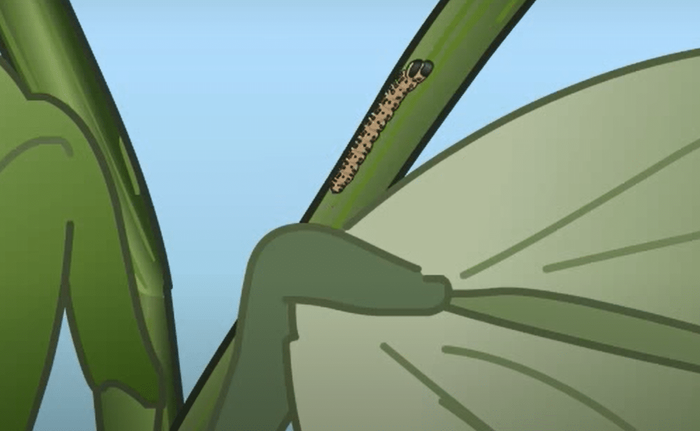The legume pod borer is a serious pest of cow pea and causes damage, but can be effectively controlled biologically using its natural enemies which are the parasitic wasps.
Strange dots on the leaves can be a sign of damage inside which is a young caterpillar of the legume pod borer developing inside which hatches and wonders to cowpea flowers then bores a hole in the flower and starts feeding on it. Affected flowers can be detected by presence of frass and they abort immaturely. The caterpillar then continues to the pods and destroys the seeds then drops on the ground through a thread after completing the 5 larval stages and transforms into pupa from which a moth emerges after 5 to 6 days and finds a suitable place to drop the eggs.
Parasitic wasps
After the moth laying the eggs, a tinny wasp attacks the eggs and inserts its eggs into the eggs of the legume pod borer using an ovipositor. The pod borer‘s eggs are parasitised by the wasp and instead of a new pod borer being formed, it is a wasp that emerges. The emerged wasps also mate and the female parasitise other eggs of the pod borer hence effectively controlling the population of the pod borer.



















